
views
Selecting and Enrolling in a Botox Course

Be a physician, nurse, or medical professional. Only medical professionals are allowed to participate in Botox courses and to administer Botox. You must be a physician, nurse, or medical professional and be able to prove your title with state transcripts before you enroll in a course.Warning: If a certification course does not ask for your qualifications, it is probably not a reputable course and you should look elsewhere. You'll need a minimum of an RN degree—medical assistants, certified nursing assistants, and aestheticians can't be licensed to inject Botox. If you are an MD, PA, or RN, or have your Nurse Practitioner's license or your BA in Nursing, you are qualified to sign up for a Botox course. Some states allow doctors with a DDS or DDM to sign up for a Botox course as well. Look up the specifics for your state to see if you can administer Botox with a Dental degree. Some states require Physician’s Assistants and Registered Nurses to give Botox injections under the supervision of a physician.
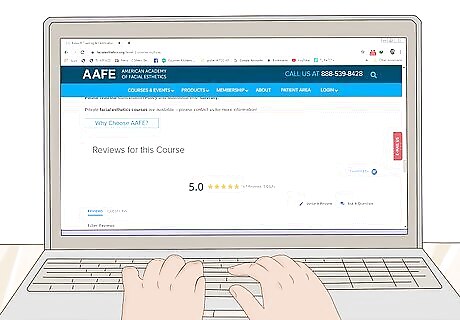
Search for a course from an accredited source. There are many different companies, universities, and clinics that offer Botox administration courses. Make sure the course that you take has been accredited by the Accreditation Council for Continuing Medical Education, or ACCME. If you can, look up reviews online about their practice and determine how long they’ve been in business. Make sure that your course is using the FDA-approved Botox from Botox Cosmetics.
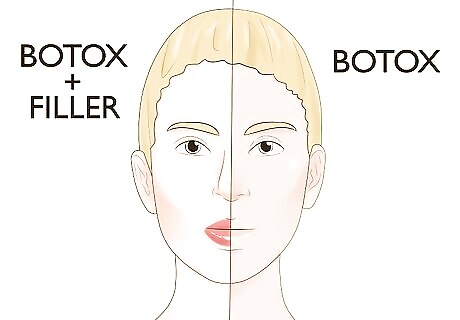
Determine if you’d like to learn about fillers as well as Botox. Some courses offer both Botox injection instructions as well as face and lip filler instructions. While Botox blocks nerves and freezes muscles, fillers plump up and fill in areas that have lost smoothness. Patients may come in asking for both fillers and Botox injections, which is why it can be helpful to learn both at the same time. Hyaluronic acid, Polyalkylimide, Polylactic acid, and Polymethyl-methacrylate microspheres are all filler types you can learn about alongside Botox. Courses that teach you about fillers may take longer to finish.

Sign up for the course and put down a deposit. There are many different accredited Botox certification courses that you can choose from that format their courses in different ways. Once you have chosen your course, sign up for it and submit your credentials. You may be asked to put down a percentage of the total course cost before you start. These courses can vary in price but typically cost around $2,000. Certification courses typically take anywhere from 2 days to 1 week to complete and may include an online portion that you complete on your own before attending an in-person class.
Memorizing Anatomy and Safety Procedures
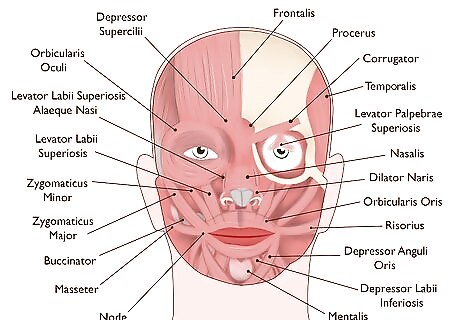
Learn the anatomy of the facial muscles and nerves. It is extremely important to understand where the muscles in the face are and how they work. Botox is injected into the muscles and blocks the nerve transmission to the surrounding areas. In your course, refresh yourself on the different muscles and what they control in the forehead, eyes, lips, and cheek area. You were probably taught about the facial muscles and nerves in medical school, but it is always good to have a refresher. Areas around the lips, eyes, and forehead are the most common injection sites.

Review the ingredients in Botox and learn what they do. Botox is a neurotoxin that is mixed with sodium chloride and human albumin. When it is injected, it blocks the nerve’s muscle control but not feeling, so there is no numbing effect. Make sure your course instructor reviews the ingredients and how Botox is made so that you understand what you are injecting.Tip: It is important to learn the ingredients of Botox so that you can determine if it is right for your future patients.
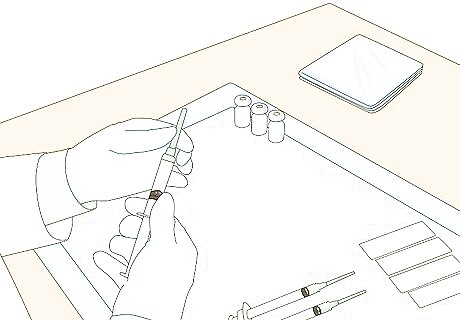
Understand how to sterilize your needle and area. Botox requires a sterile needle and environment. Not following the proper safety and preparation procedures could result in unwanted side effects. Make sure your course prepares you for in-person injections and how to keep the area sterile. Always wear clean gloves while injecting patients with Botox.
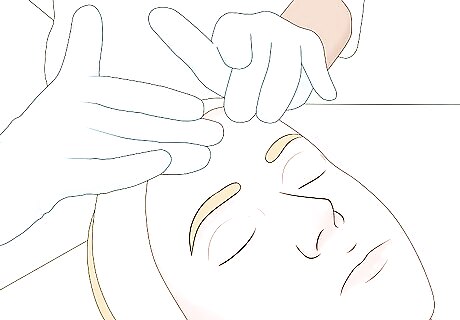
Make sure you know how to prepare your patient. Since injections in the face can be painful or uncomfortable, a numbing cream is applied to the face before Botox is used. Make sure you know the correct areas to apply the numbing cream and how long to wait for it to take effect. The numbing cream should be applied to any potential injection area. It typically takes 30 minutes to take effect, but this can vary from patient to patient.
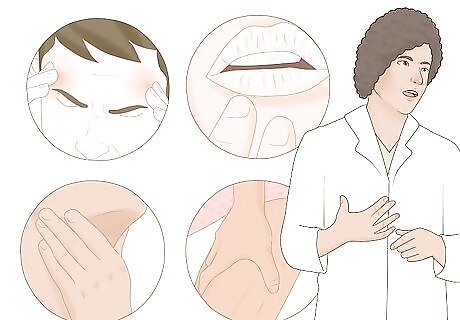
Learn the possible side effects of Botox. Although not very common, Botox can cause some patients to feel side effects after an injection. These include muscle weakness near the injection site, trouble swallowing, muscle stiffness, dry mouth, and headaches. Learn these side effects so that you can inform your patients before each injection. Some people may also experience the medication migrating to other areas, causing unintended effects like drooping eyebrows or eyelids. You should let your patients know that if they suffer any severe side effects, like trouble breathing, they should see a doctor right away.
Learning Injection Techniques and Completing Your Course
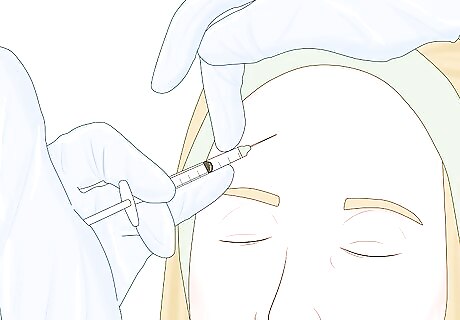
Observe the correct depth for an injection. Botox should be injected with a 30 to 33 gauge sterile needle into the upper parts of the face muscles. Any deeper and it could hit a blood vessel and cause bruising. Make sure your course teaches you how far to insert the needle and how best to position your hands to do so. The needle should be inserted at an angle that is almost perpendicular to the face. It should never be inserted straight down into the face.
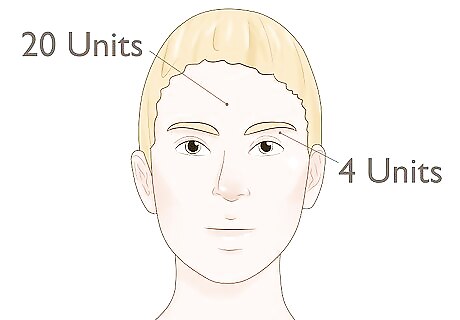
Understand the correct dosage of Botox. In its original form, Botox is a powder. It is diluted with saline before it is injected, so it is measured in Units per 0.1 mL. The recommended dose of a single injection is 4.00 Units and the maximum dose is 100 Units. Each patient requires a different dose amount for their specific needs. The forehead often gets about 20 Units in 4 different injections since it is so large, while the areas around the eyes might only get 4 Units.
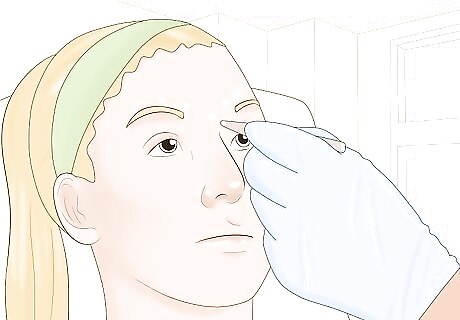
Note where to inject Botox to block different nerves. The nerves in your face are in different areas and affect the movement of different muscles. The forehead muscles, eyebrow muscles, and mouth muscles are all affected by different nerves. If a patient comes in looking to reduce forehead wrinkles, it is important to know where the nerves that move the forehead are. Memorize the placement of Botox in different areas of the face to learn where to inject it.

Analyze how to achieve different results with Botox. Each patient wants Botox for a different reason. Most people come in for wrinkle and skin-tightening purposes, but they may vary in placement and severity. In your course, learn how to talk with a patient and figure out the best placement and amount of each injection for their desired results.Tip: While Botox is most commonly used to reduce wrinkles, it can also be used to prevent migraines and treat muscle disorders. The most helpful way to learn how to achieve different results is to memorize which nerves are where and what muscles they affect.
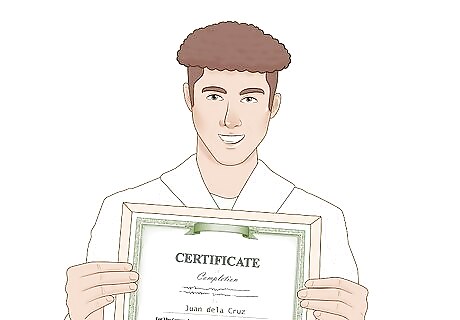
Earn your certificate by attending each training class. The only way to receive your Botox administration certificate is to attend each class that is required of your overall course. At the end, you will be presented with your certification and you can begin injecting Botox into patients in a clinical setting. If you do not feel comfortable injecting Botox after you complete your course, you may need to do additional courses or spend some time practicing on real people while a certified professional oversees you.



















Comments
0 comment